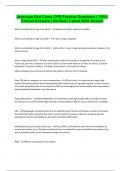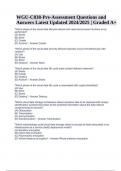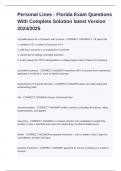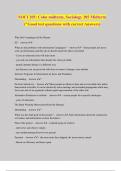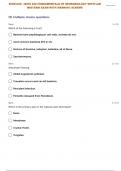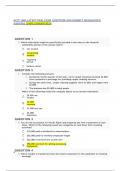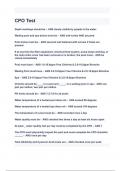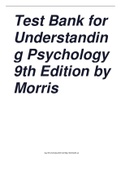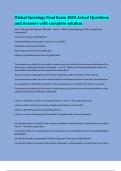Examen
American Red Cross CPR Practice Questions 100% Correct Answers Verified Latest 2024 Version
- Grado
- Institución
American Red Cross CPR Practice Questions | 100% Correct Answers | Verified | Latest 2024 Version What is considered the age of an adult? - Adolescents (after puberty) and older What is considered the age of a child? - 1 year of age to puberty What is considered the age of an infant? - Less tha...
[Mostrar más]
